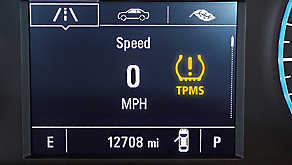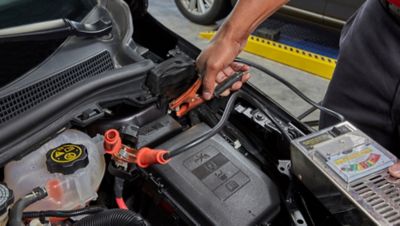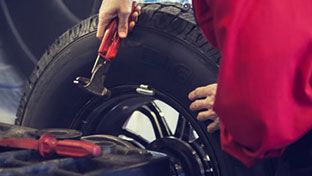If you drive a newer car, you probably have what's called a Tire Pressure Monitoring System (TPMS) installed. TPMS is an electronic system inside the tire that monitors the air pressure in your tires. If your tires are under- or over-inflated, the TPMS activates a warning light on your dashboard. When the light is steady, it means you need to have your tire pressure checked. When the light is flashing, it means you need to have your TPMS checked.
If you see the TPMS light, stop by one of our stores for a free tire pressure check. If you're traveling, get to a gas station as soon as possible, and add air to your tires. Not sure how much to add? Check out How to Check Tire Air Pressure for step-by-step instructions.

If you have to change a tire, don't be alarmed when you see the TPMS light illuminate or flash after you install the spare. It's just the system's way of letting you know it can't find a TPMS unit in the spare tire, so nothing to worry about there.
TPMS takes the guesswork out of accurate tire pressure. It automatically lets you know when pressure is low, which keeps you safer, protects your tires from damage and improves your MPGs.
How to protect your TPMS for the long haul:
- Avoid road hazards like potholes and curbsides
- Keep your car battery charged and healthy
- Maintain your tires — an important effort for many reasons, not the least of which is so you can avoid flat tires, which can damage your TPMS

